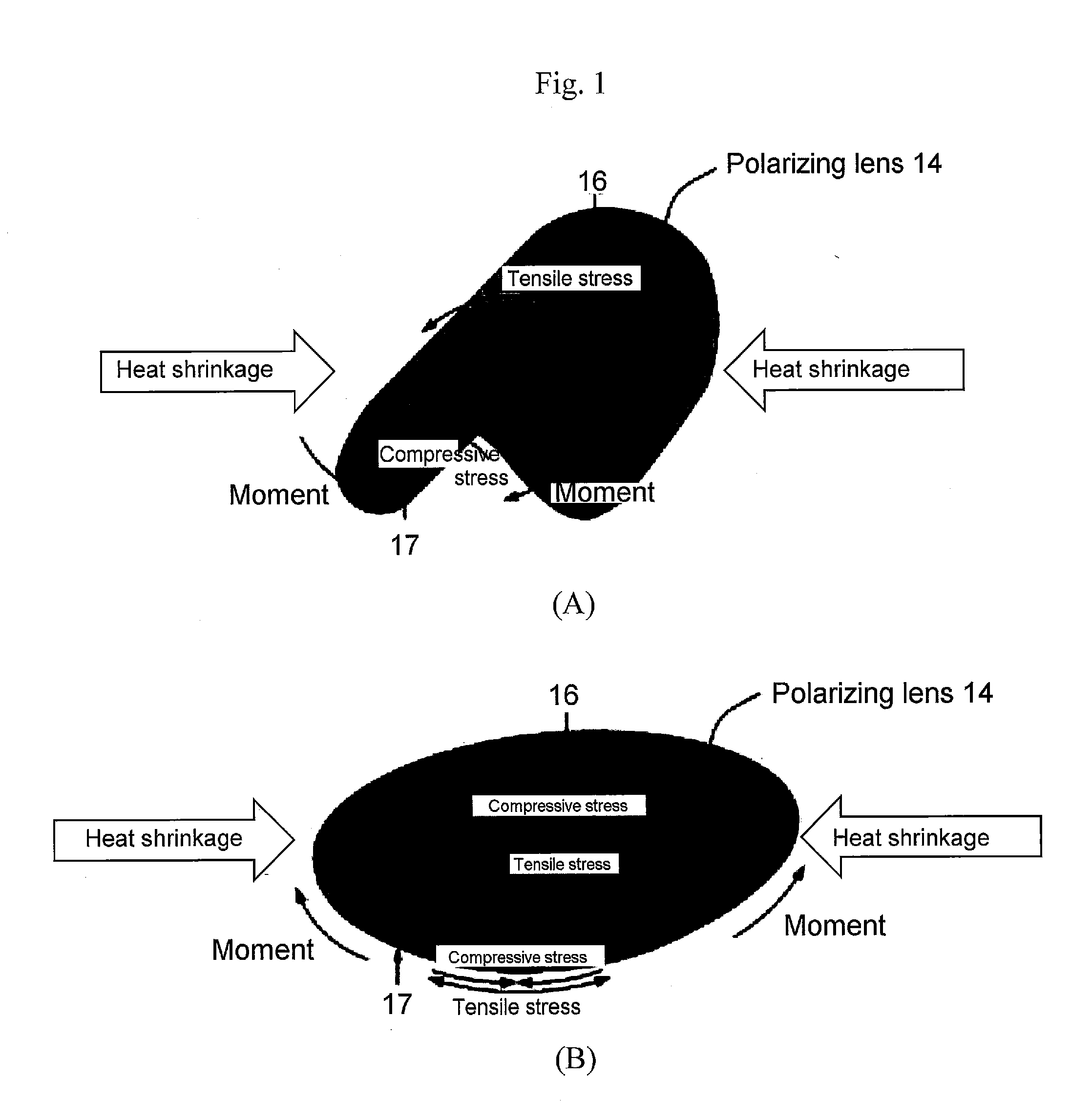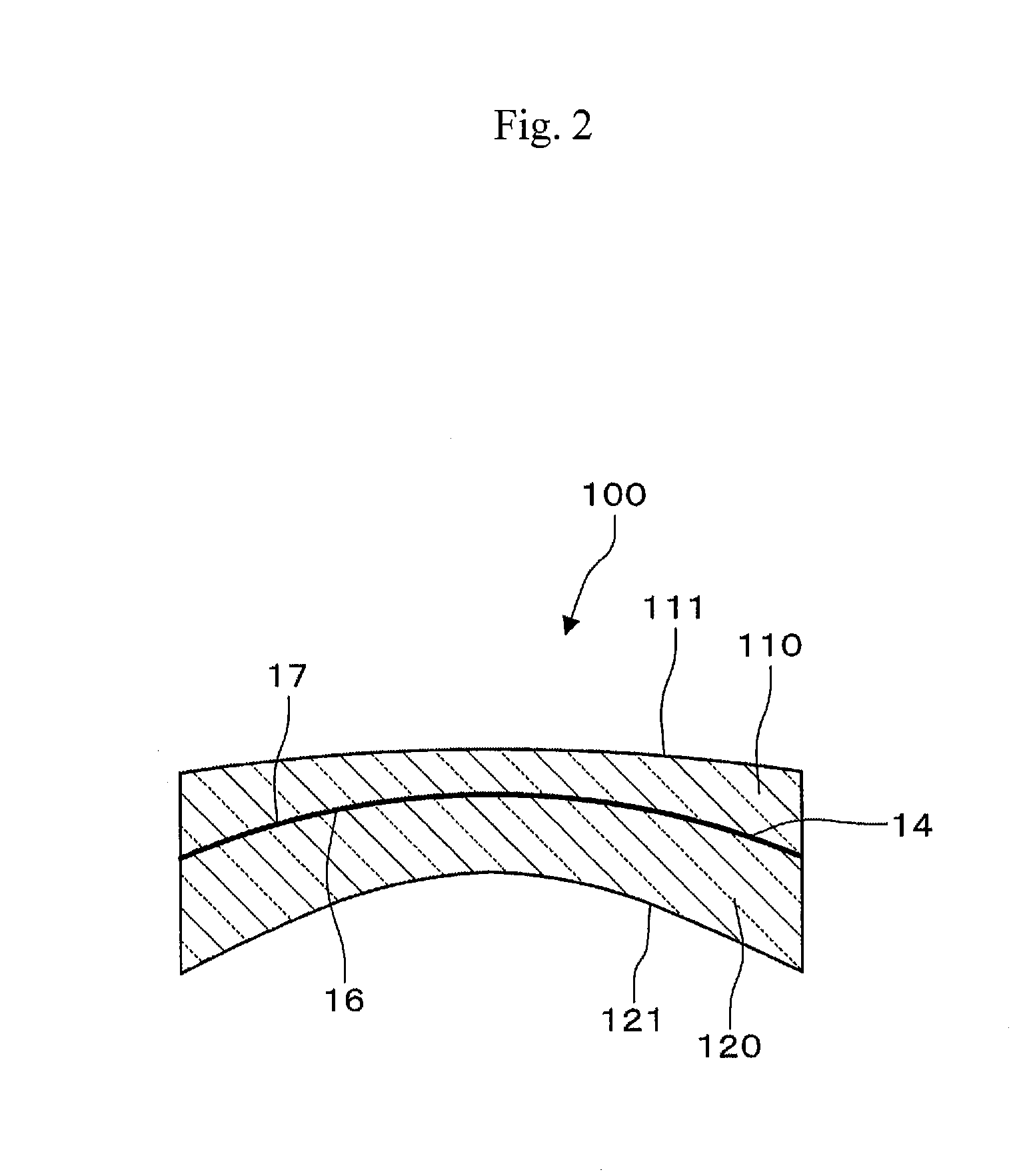Method of manufacturing polarizing plastic lens
a technology of polarizing plastic and manufacturing method, which is applied in the field of manufacturing polarizing plastic lenses, can solve the problems of increasing the tendency to curl, affecting the quality of polarizing film, so as to improve the rigidity of polarizing film, facilitate handling, and prevent curling
- Summary
- Abstract
- Description
- Claims
- Application Information
AI Technical Summary
Benefits of technology
Problems solved by technology
Method used
Image
Examples
modification example 1
[0171]FIG. 22 is a sectional view schematically showing film positioning member 52 equipped with a guard jig 84 relating to the present modification example. In the above implementation mode, in the step of reversing polarizing film 14, the method of jetting air to promote the reversal of polarizing film 14 was disclosed. This jetting of air will sometimes cause problems by displacing unwanted curved portions 60 and impeding the turning inside out of polarizing film 14. Instead of vacuum suction of curved portions 60, or in combination with vacuum suction, as shown in FIG. 22, a guide jig 84 can be used to prevent curved portions 60 that have been cut off from displacing.
modification example 2
[0172]FIG. 23 is a plan view schematically showing polarizing film 14 equipped with ribs 85 relating to the present modification example. In the above implementation mode, curved portions 60 were provided along the edge of polymerizing film 14. Ribs 85 (positioned in a direction that intersects the radial direction of polarizing film 14 in a structure that protrudes to the convex surface 16 side) can be further molded into curved portion 60. The polarizing film tends to be deformed in a direction perpendicular to polarization axis 70 by the heat treatment. Providing ribs 85 can further inhibit the deformation of polarizing film 14 due to the heat treatment, and reduce astigmatismus defects.
modification example 3
[0173]In the above implementation mode, a lens mold 12 was used to manufacture polarizing plastic lens 100. However, the method of employing a gasket having a member that supports polarizing film 14 and other known methods of manufacturing a polarizing plastic lens 100 using a polarizing film 14 that has been curved surface processed can also be applied. Since the reversed polarizing film 14 tends not to curl, it can also be used in these methods to stabilize the quality of the external appearance of polarizing plastic lens 100 and enhance manufacturing efficiency.
[0174]A further aspect of the present invention relates to a device of manufacturing a polarizing film.
[0175]The above manufacturing device includes a film reversing member set that is used in the reversing step to reverse the convex surface shape to a concave surface shape by pressing the polarizing film that has been curved surface processed;
[0176]the film reversing member set includes a pressing member with a convex sur...
PUM
| Property | Measurement | Unit |
|---|---|---|
| outer diameter | aaaaa | aaaaa |
| inner diameter | aaaaa | aaaaa |
| temperature | aaaaa | aaaaa |
Abstract
Description
Claims
Application Information
 Login to view more
Login to view more - R&D Engineer
- R&D Manager
- IP Professional
- Industry Leading Data Capabilities
- Powerful AI technology
- Patent DNA Extraction
Browse by: Latest US Patents, China's latest patents, Technical Efficacy Thesaurus, Application Domain, Technology Topic.
© 2024 PatSnap. All rights reserved.Legal|Privacy policy|Modern Slavery Act Transparency Statement|Sitemap



